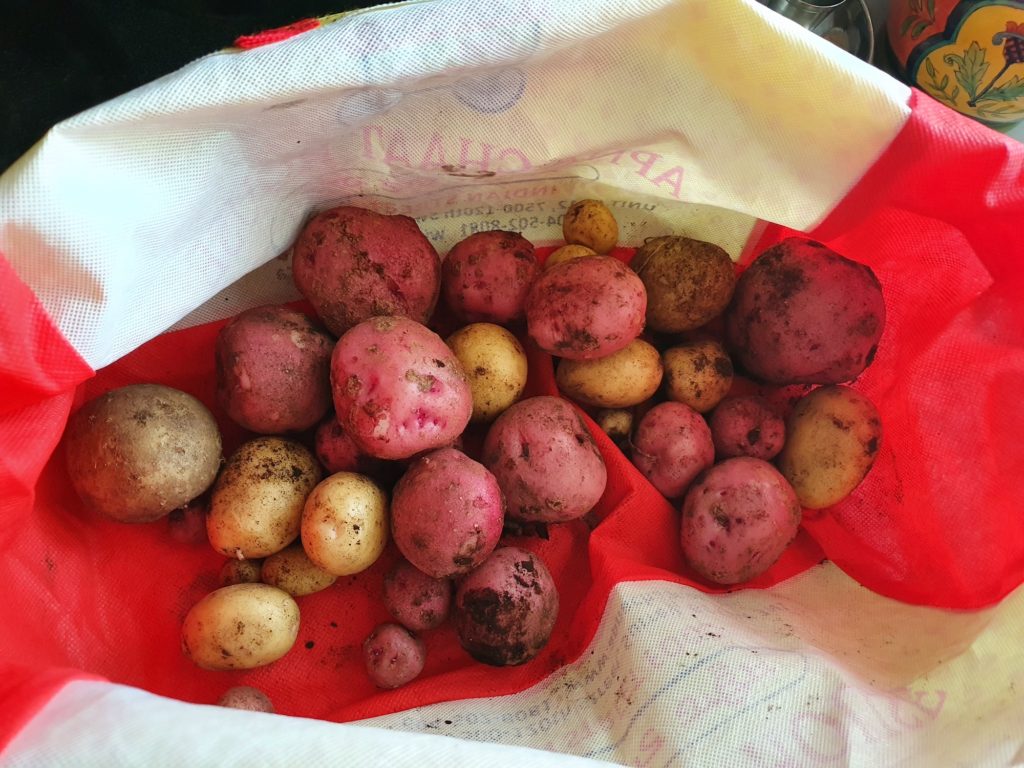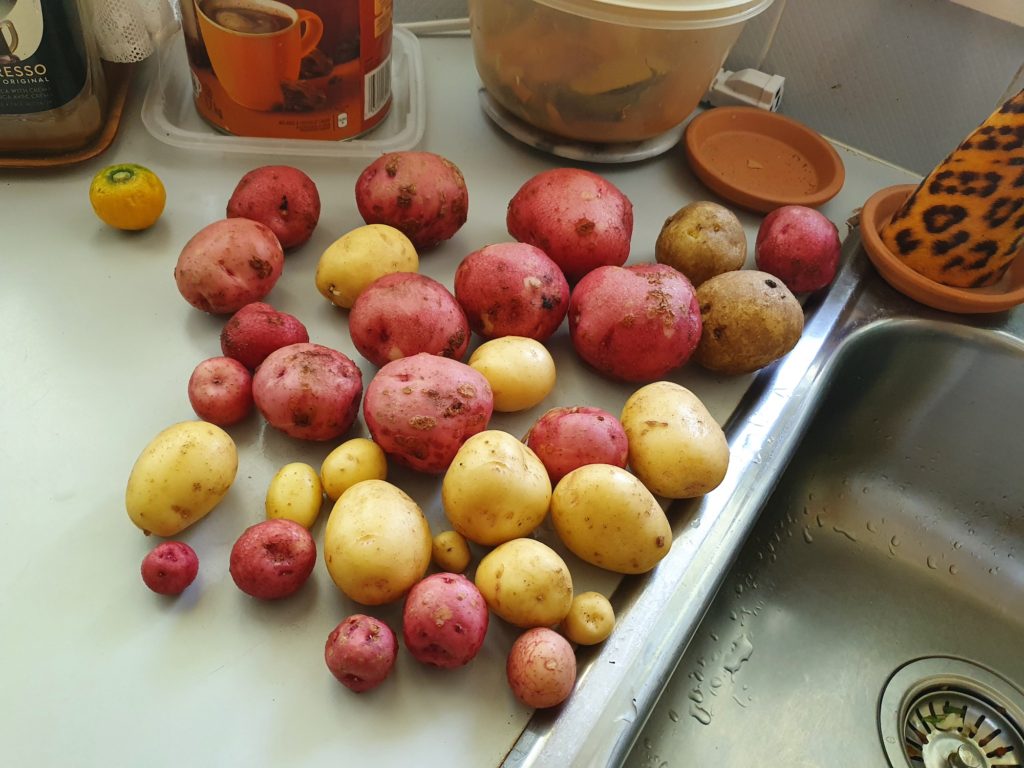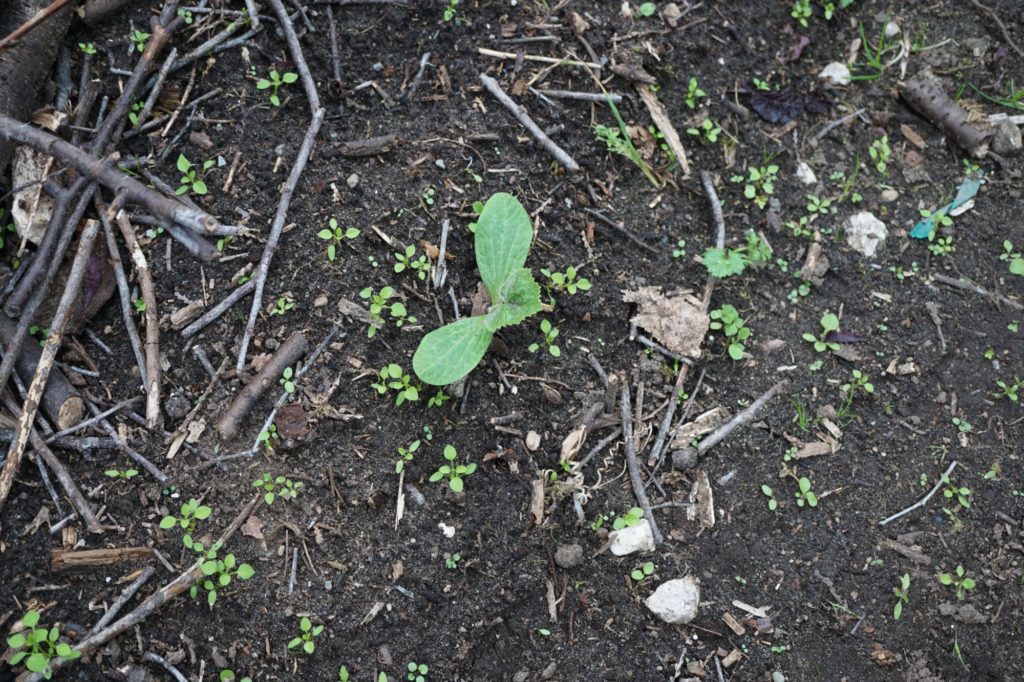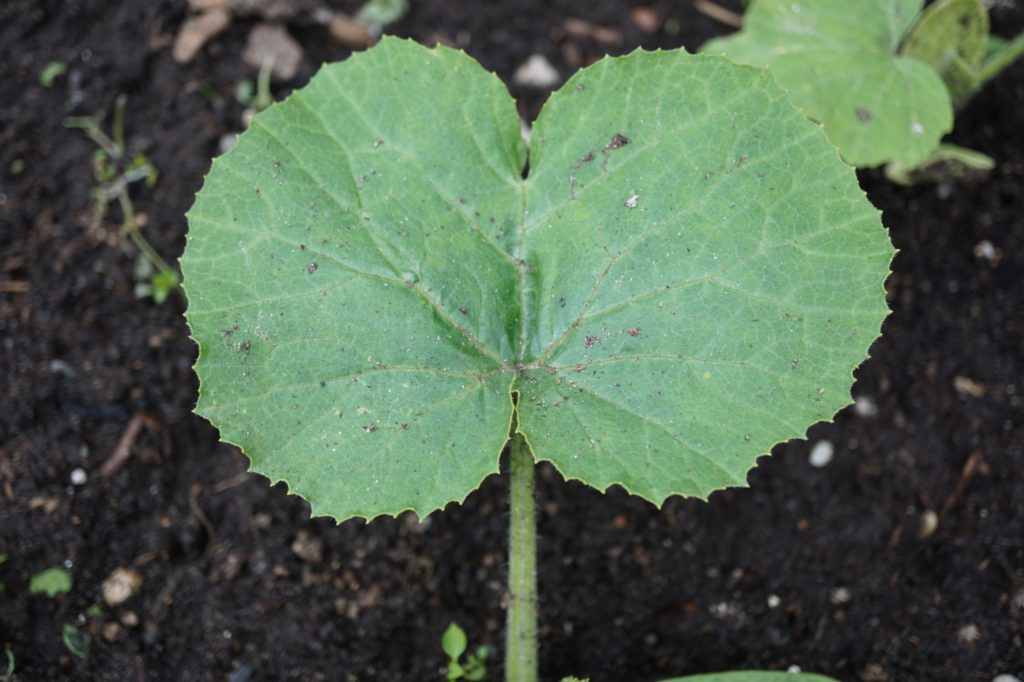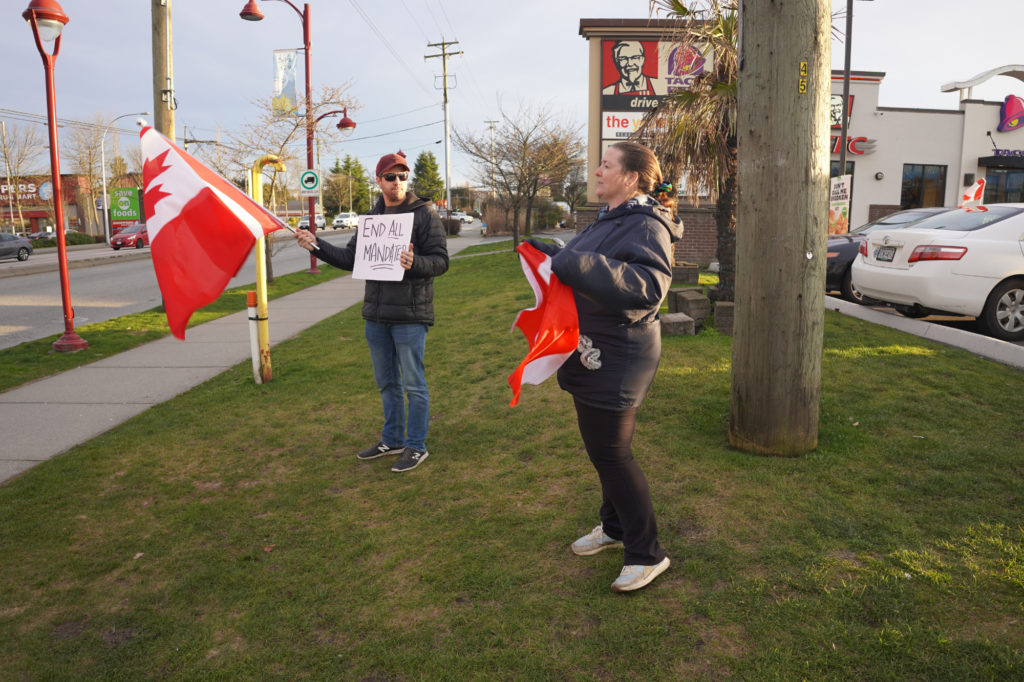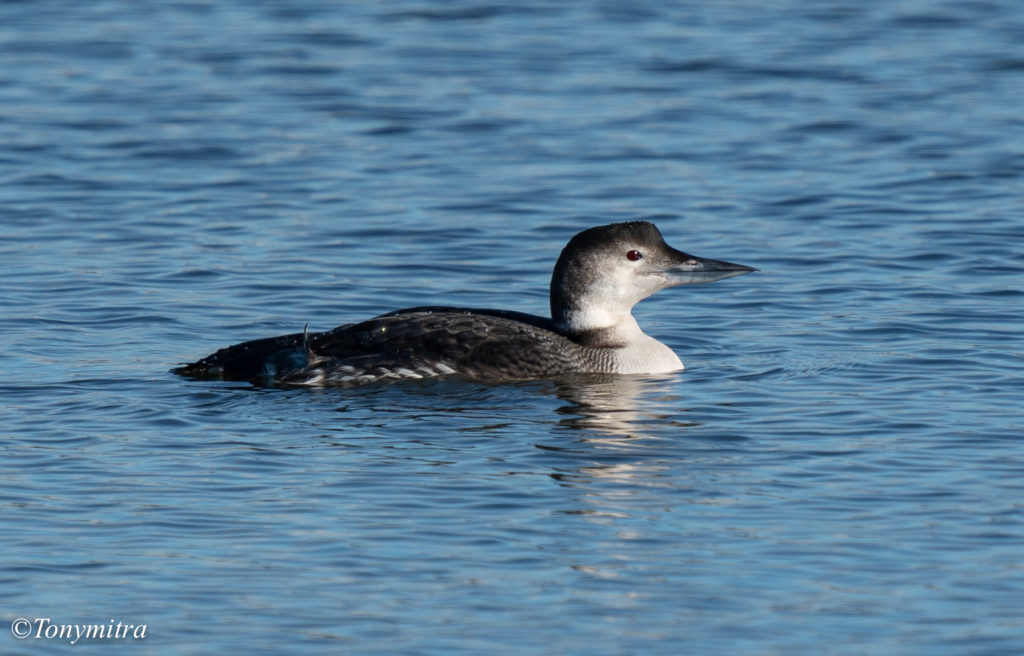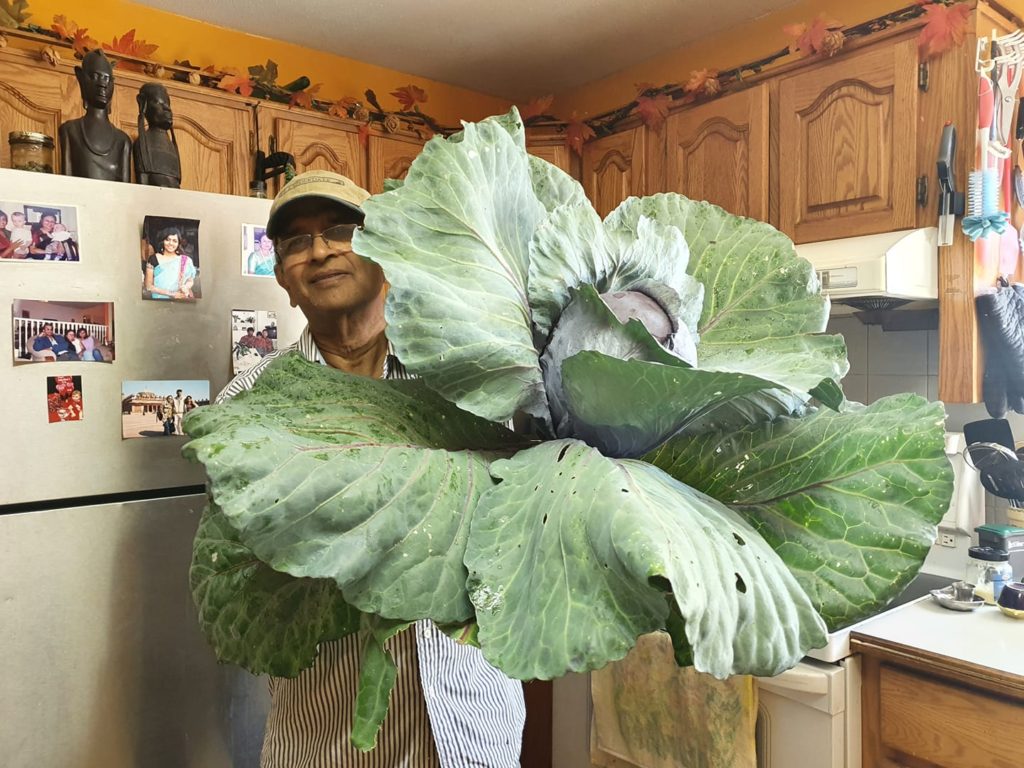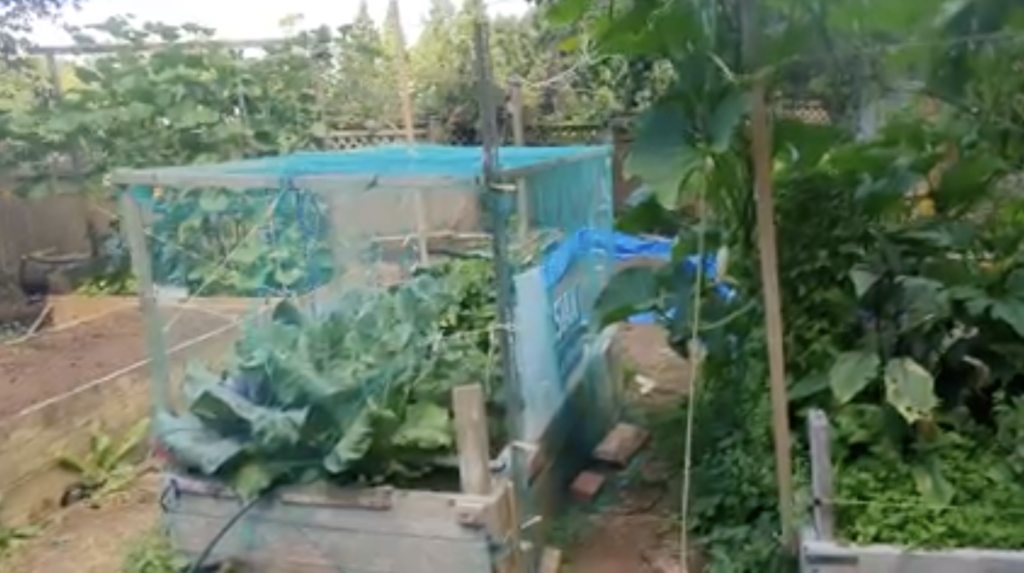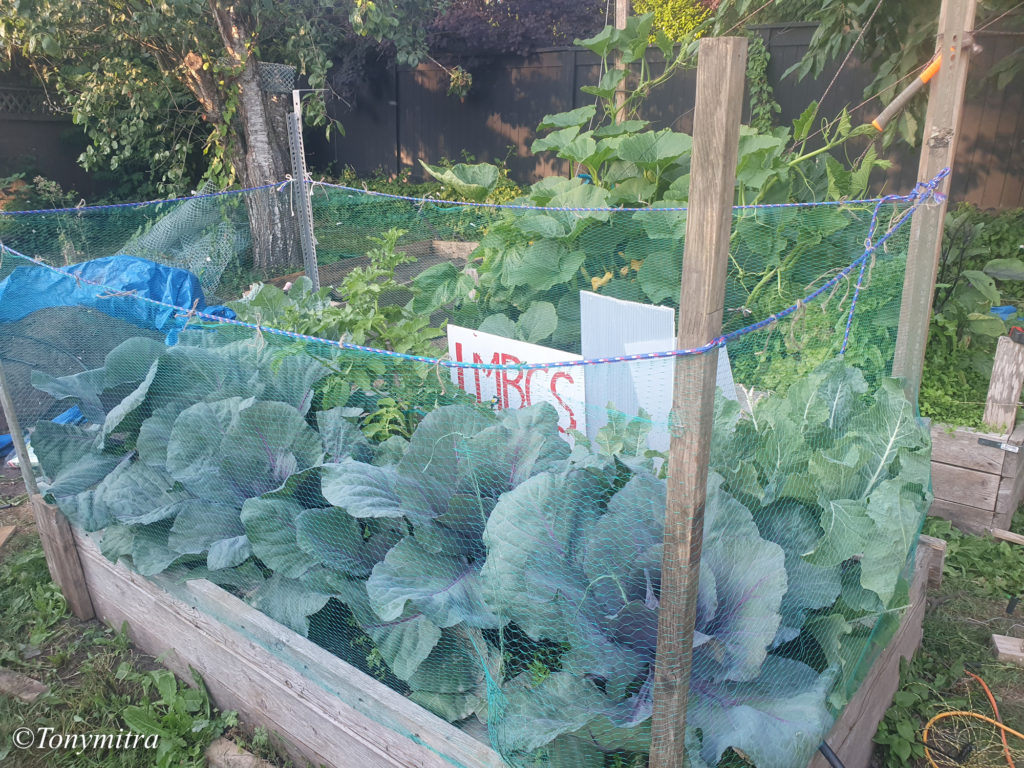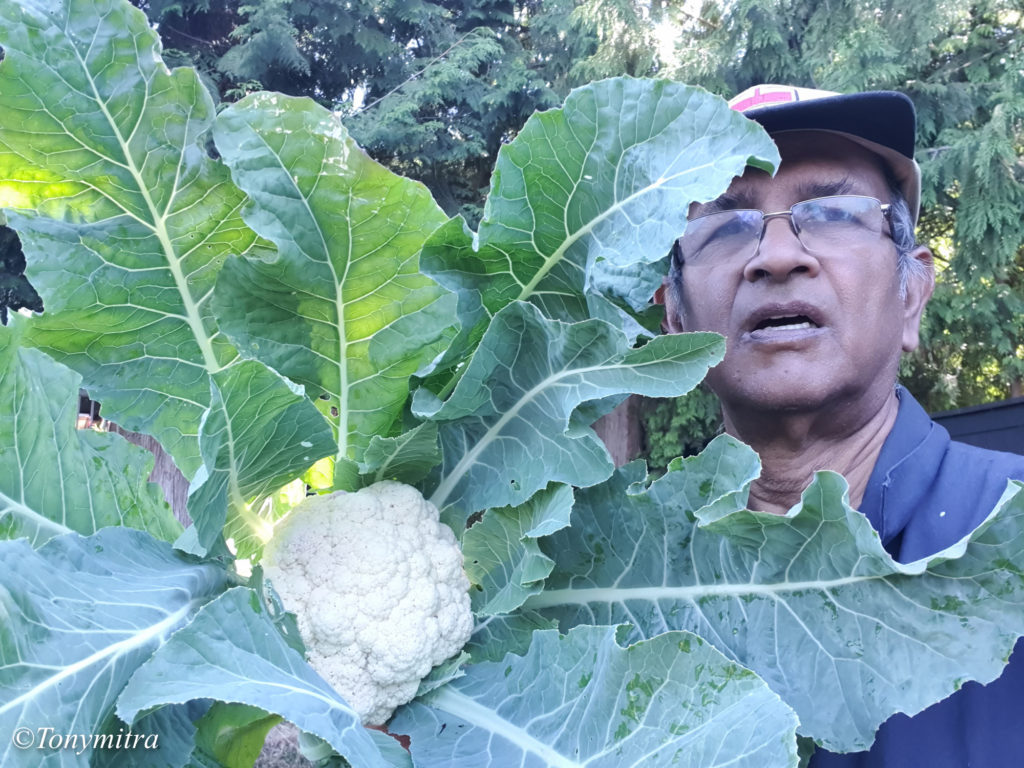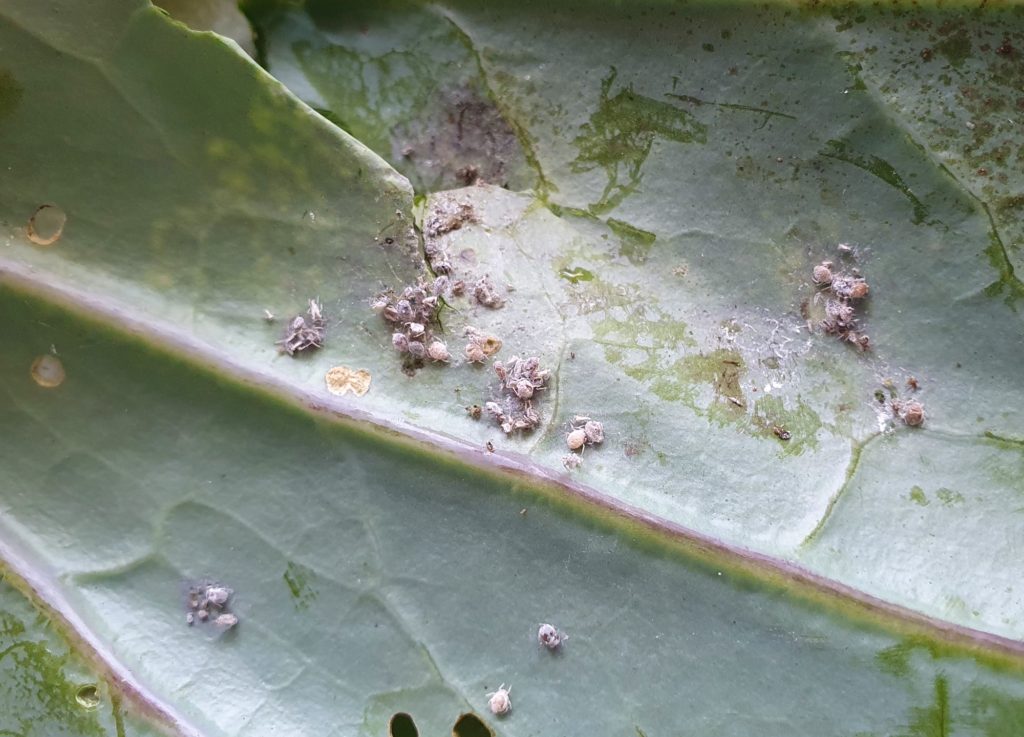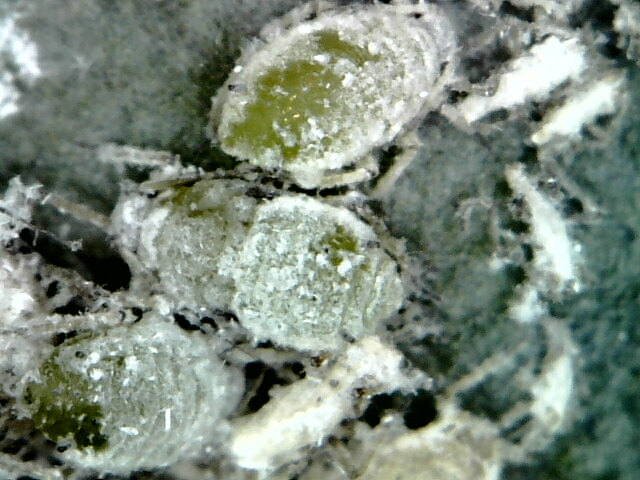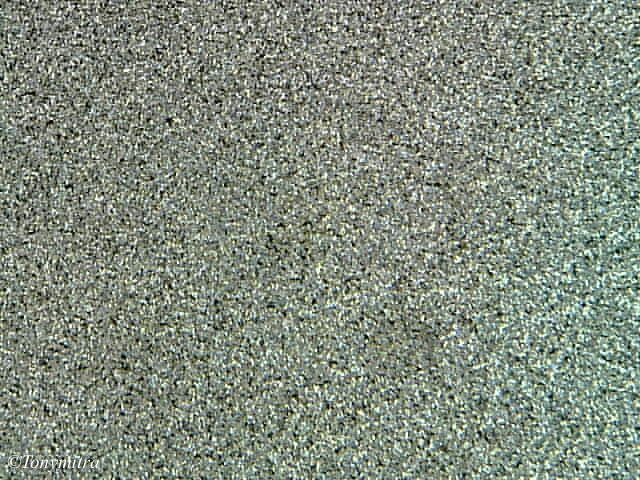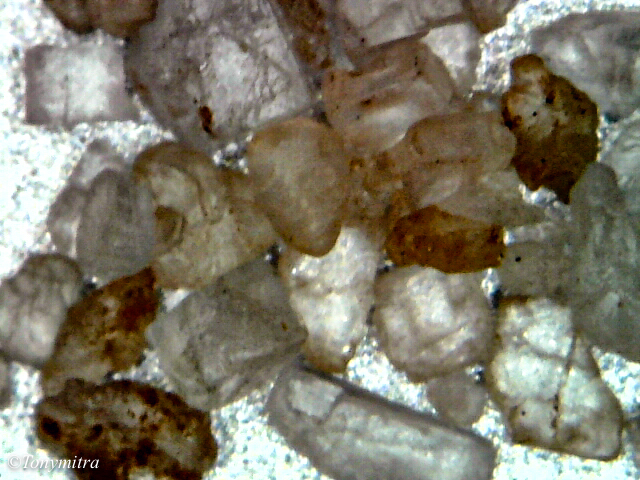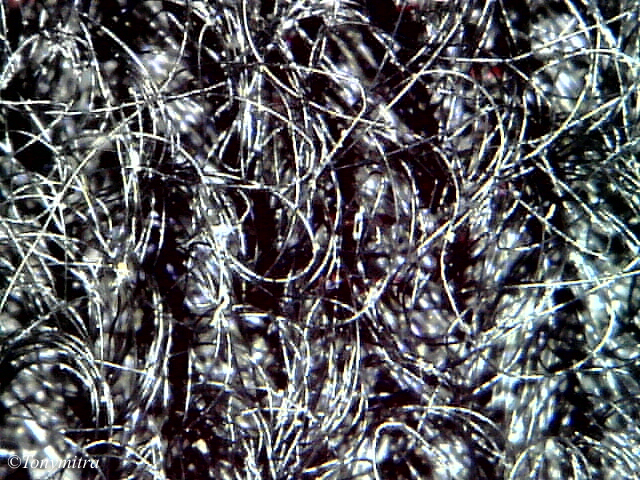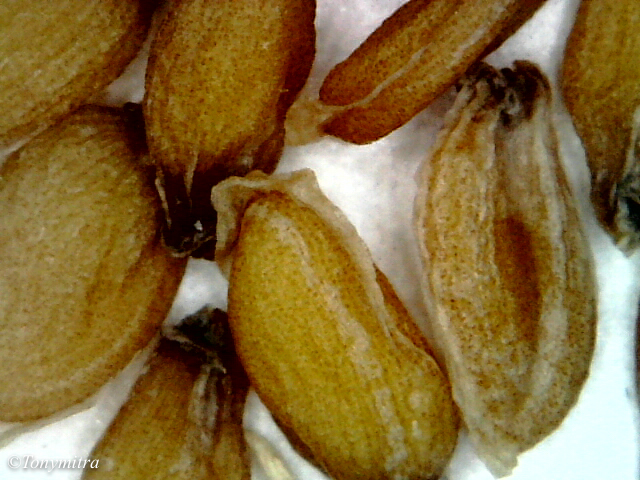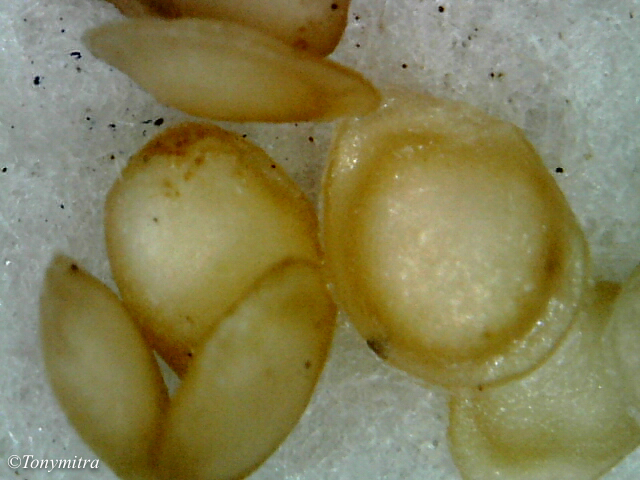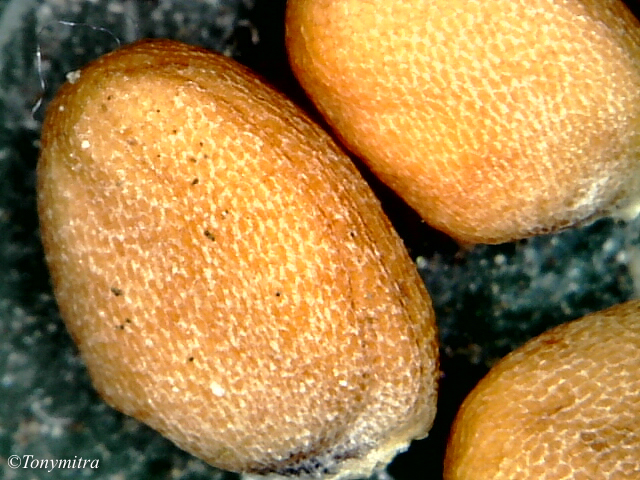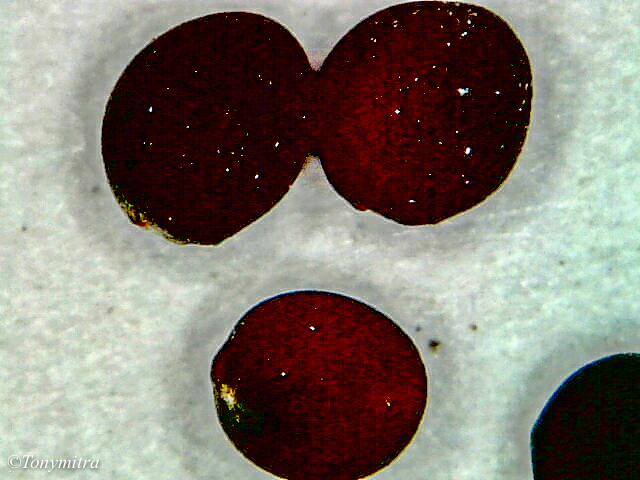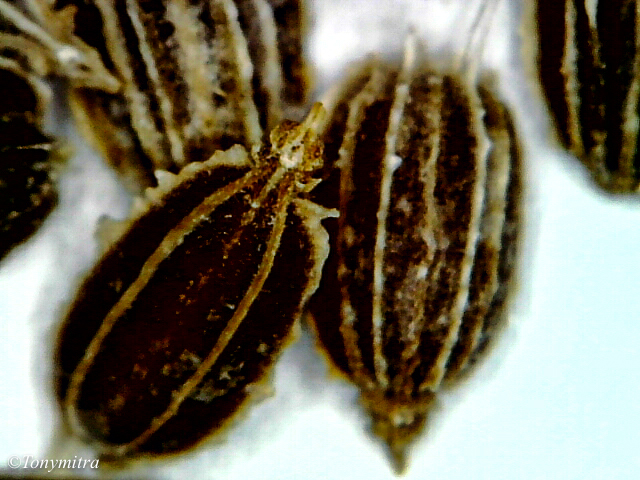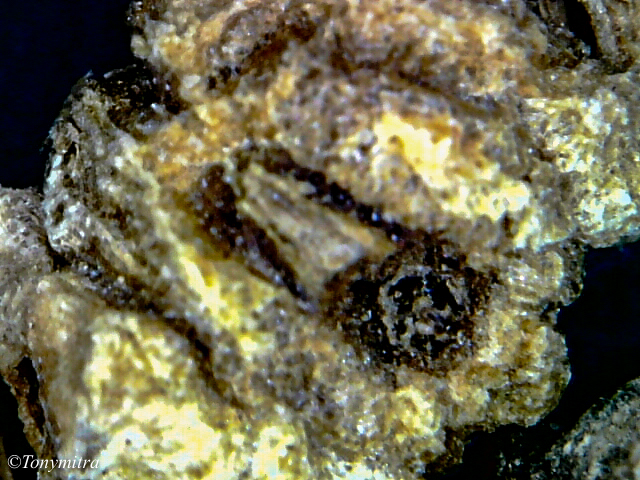The title looks uninteresting, but I thought this is a good thing to post about, for amateur gardeners, to prepare for a future in making homegrown food without support of Industry.
So here is what was happening that I wrote about a few days ago.
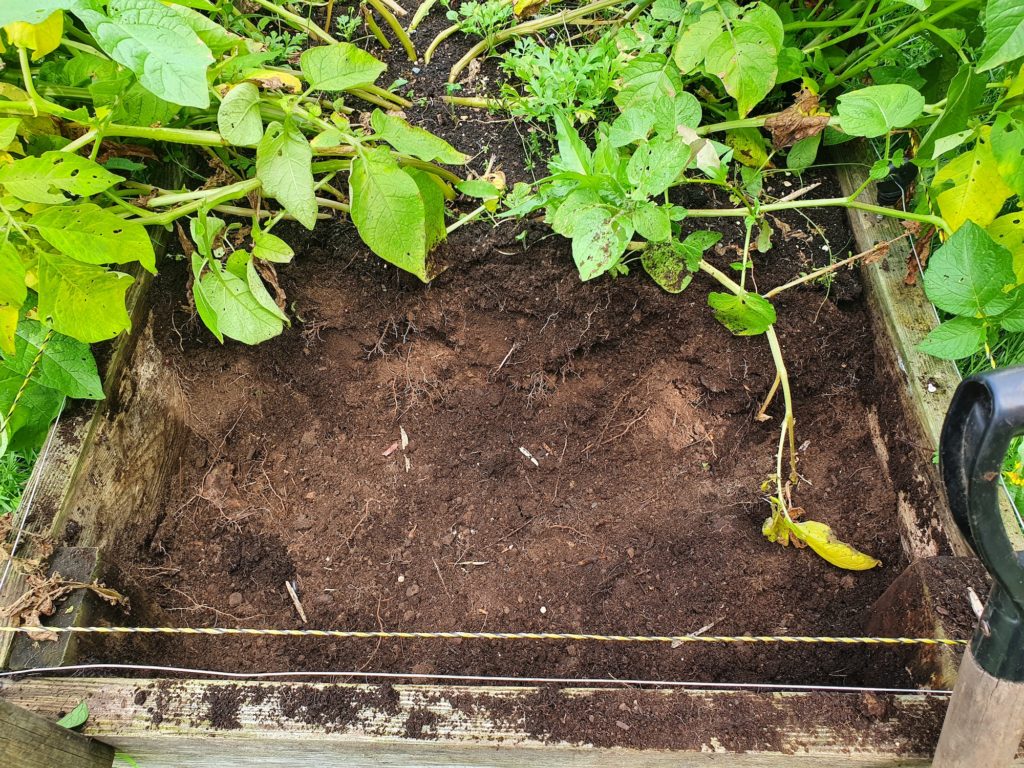
This section of the potato bed was cleared. Apart from checking the tuber growth and deciding if the rest of the bed should be also cleared and potatoes all harvested, I had a few other goals. First was to check if the two kinds of potato planted there, red skinned Norland potato and white skinned Yukon gold, can co-exist. The other goal was to create space for planting a few of my trailing left alone remaining tomato plants still languishing in small pots with nowhere else to go – like homeless plants.
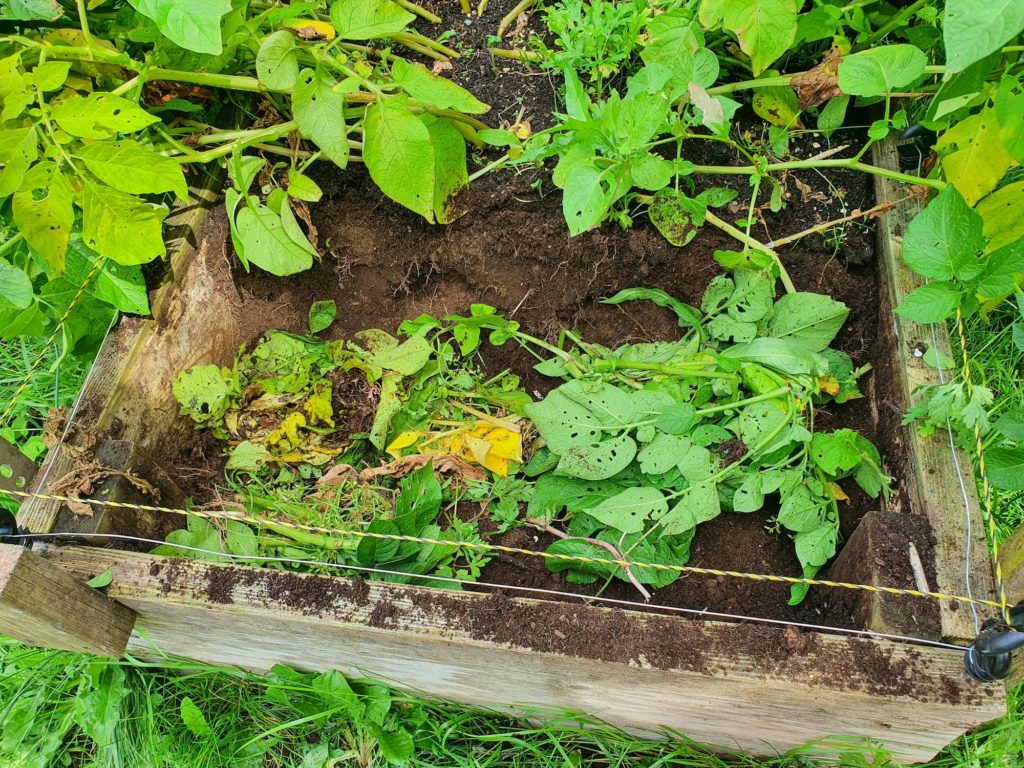
The original bed had multiple layers of organic matter, to supply slowly composting nutrients to the potato plants. As the soil was dug up, all the greens had vanished and turned into brown soil. However, the nutrients were mostly used up, I presume, by the potato. And potato belongs to the same group – nightshade – as tomatoes. This means tomatoes will looks for the same nutrients that potato is expected to have taken off the composted soil. This is why they say you should rotate the crop, and plant legumes where nightshades were grown one year, to help fix the nitrogen etc.
But I decided to rotate the soil and not necessarily the crop type, here in this mini-patch. So I removed all the soil and kept it aside, and first buried the potato plants themselves, to provide the next cycle of compost.
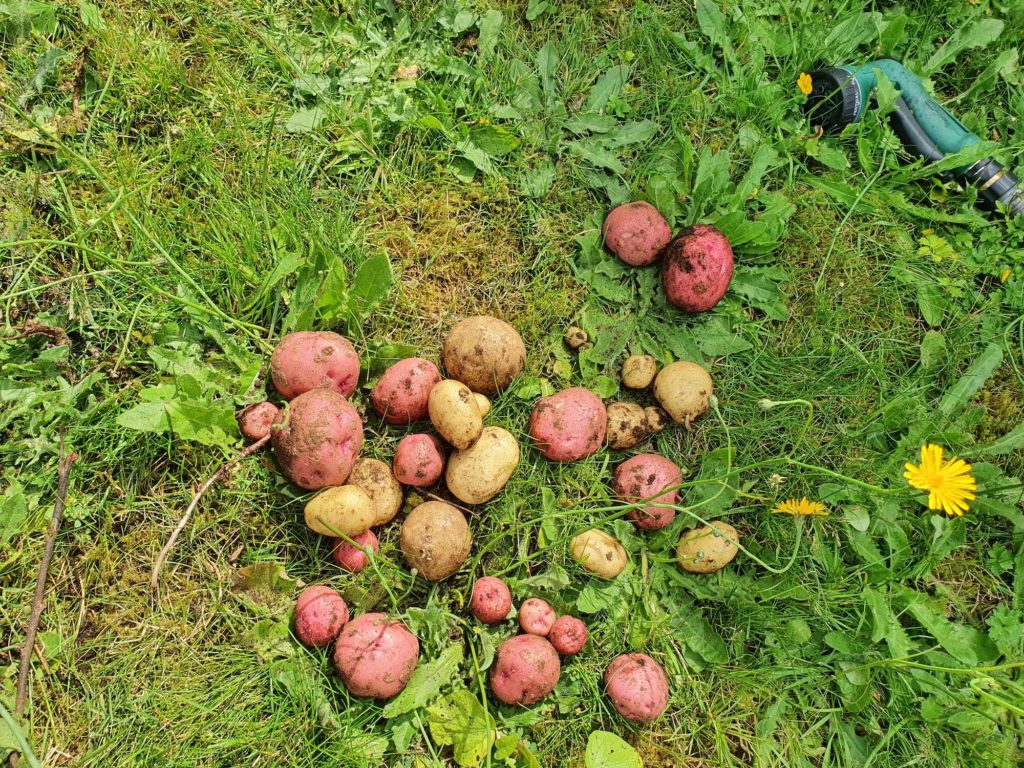
The harvested potatoes proved a few things such as:
These two kinds of potatoes do not fight each under and can coexist. I presume this is because they are too closely linked genetically and recognise each other as friend rather than foe. This is not the case with Russian purple potato. They will fight each other, like H=hyena and lions in the African plains, the outcome depending on who has the greater mass. In the potato wars, if Russian potatoes outnumber the Canadian version, it will kill the Canadian varieties. If it is the other way around, the Russian potatoes will be killed.
I was happy to note that Canadians don’t fight Canadians. Nonetheless, I could see it is not a great idea to plant them together, since each needs its own separate level of watering. Therefore, you can either underwater one kind of overwater the other. Also, they have different stages of growth.
But, in a fix, the two can be planted, either in their own corner, or totally mixed. They will survive.
Lesson learned.
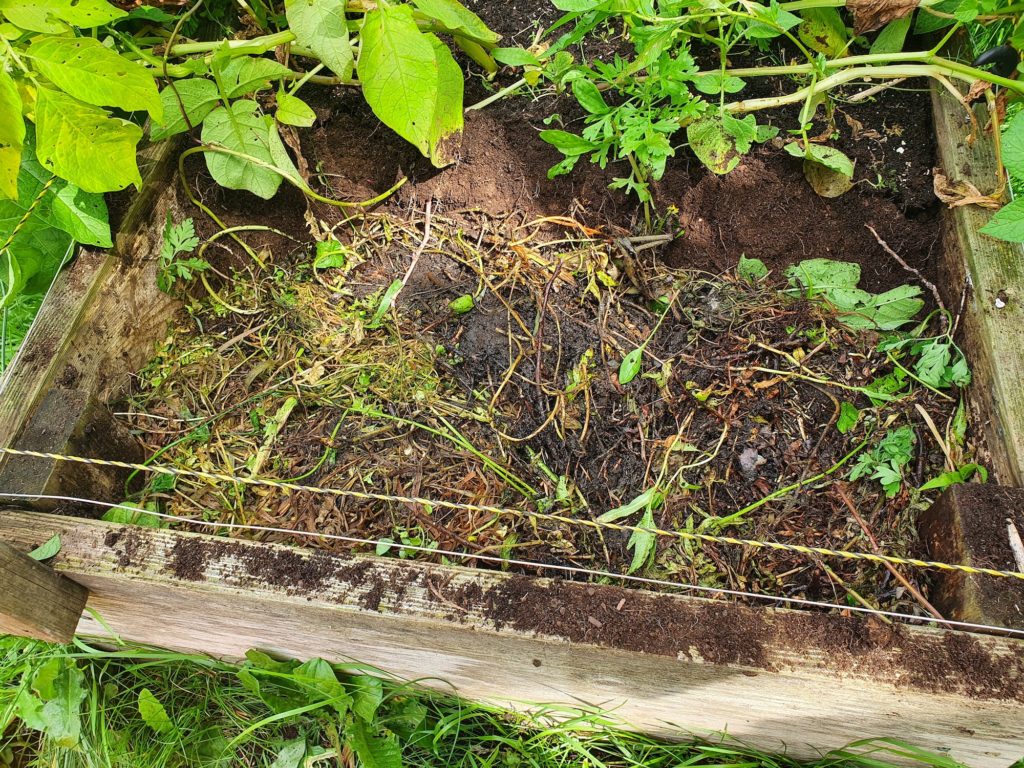
The next layer was old uprooted weeds that I did not throw away but kept bundled in a corner. They partly dried out in the strong sun, and partly started rotting when heavy rains made them soggy. Bacteria were already at work, along with lots of worms, insects and smaller micro-organisms. They were all busy recycling the organic matter, the essentials of composting.
So now I had partly composted wood at bottom, with crumpled fresh greens (potato plants just uprooted) and then semi browned and semi rotted weeds, mixed with minimum quantity of soil that came along with the pulled weeds.
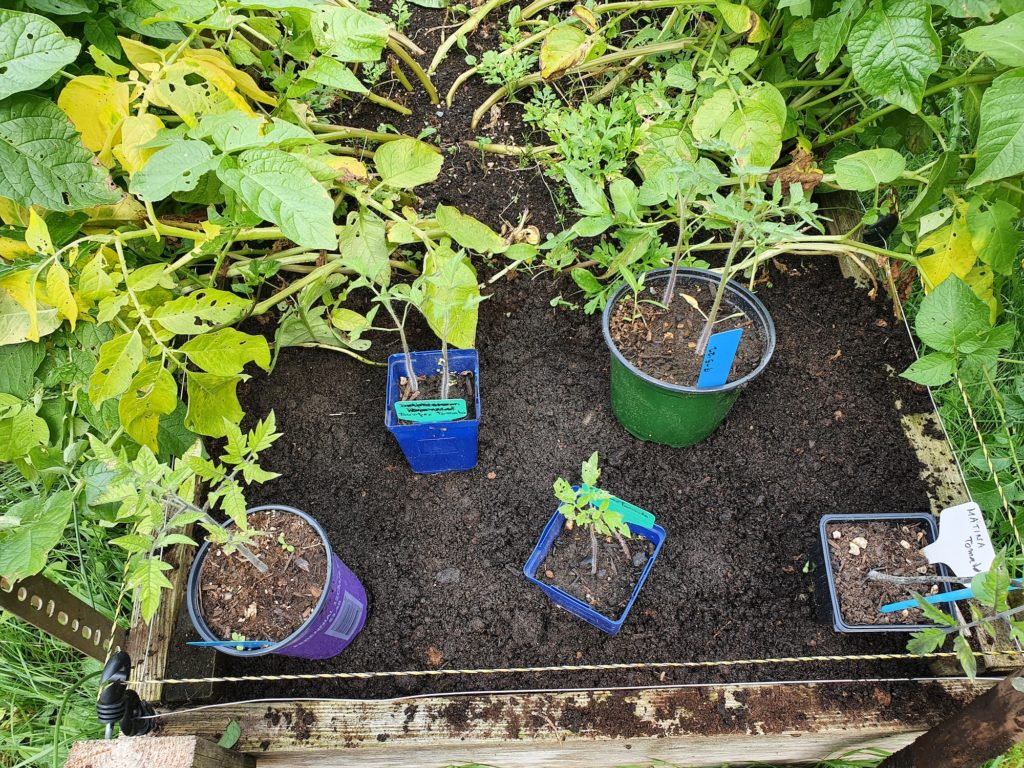
I had the get the level right, so that when the plants are taken out of the pots and transplanted here, the level of soil would be right and n line with the lower half of the plants. Not a rocket science, but this is how I do it. I fill composted soil till the plastic part of the pots are buried, then take the plants out of the pots and place them in the hollow.
What surprised me were the number of works that wriggled out from the bottom of these potted tomatoes in the pot. How on earth they got there, is a puzzle. That’s nature, for you.
